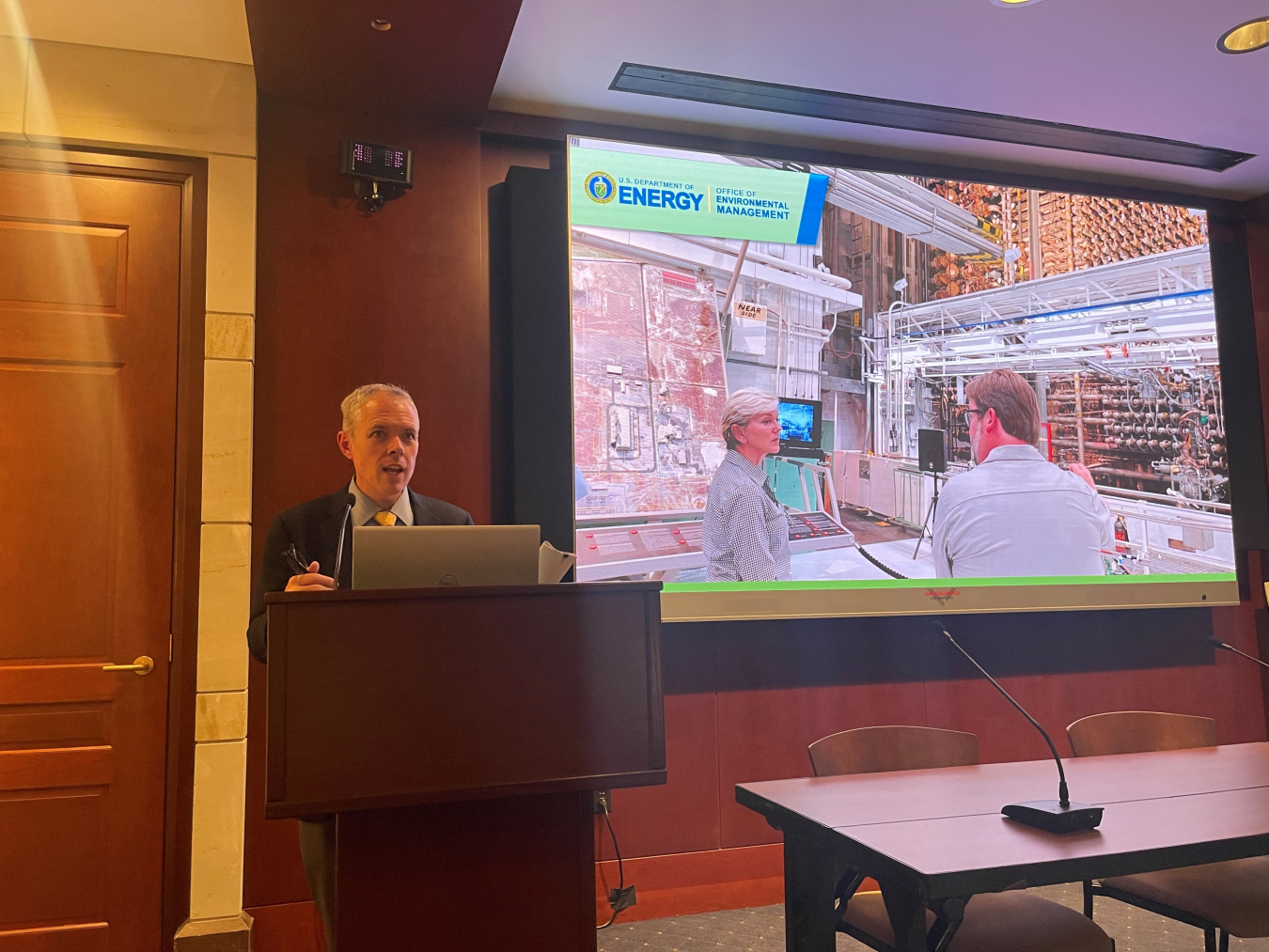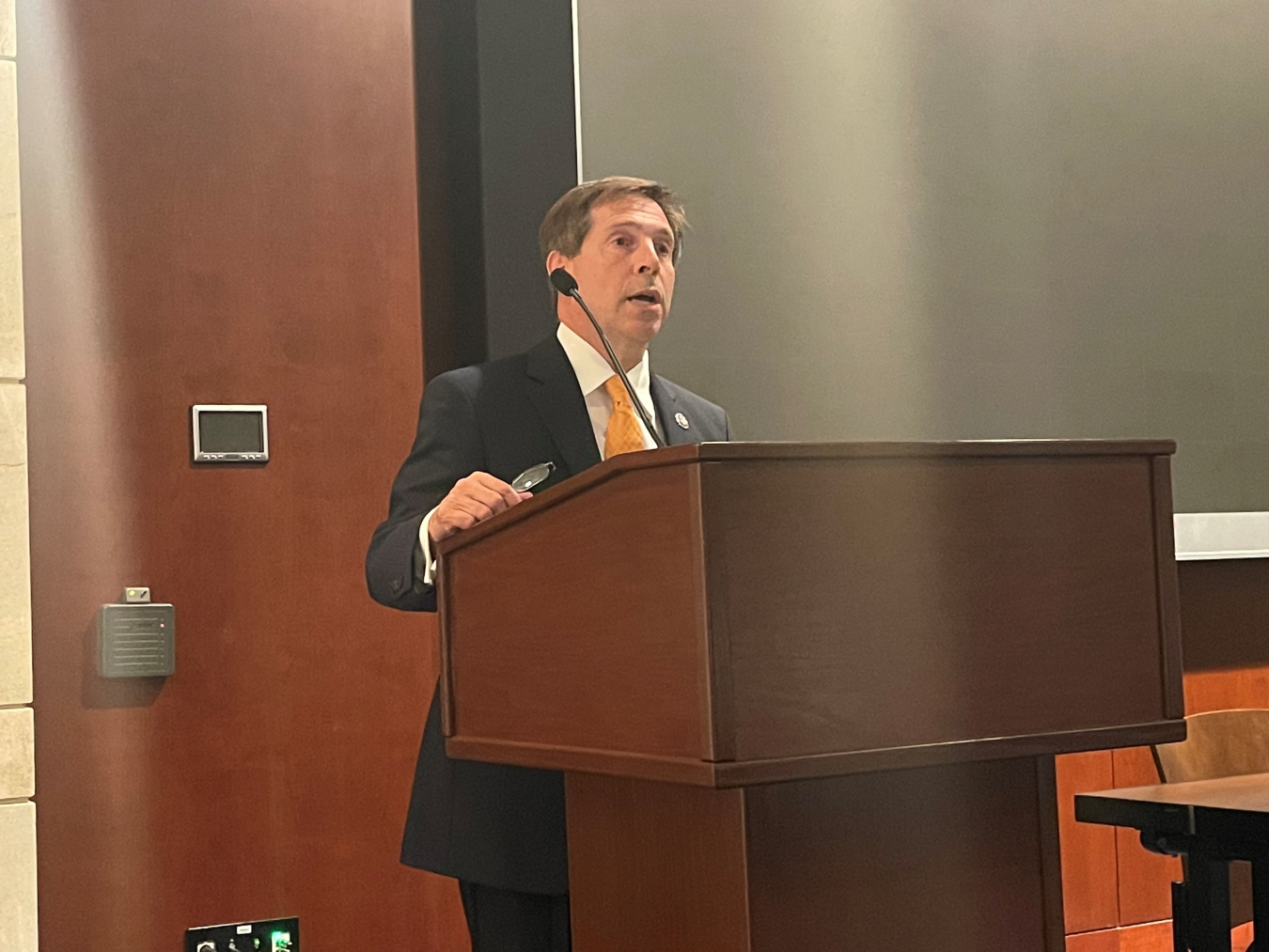
Historic accomplishments, innovative technologies and additional treatment capabilities have ushered in a new era of cleanup progress that wouldn’t have happened without EM’s champions in Congress, EM Senior Advisor William “Ike” White said last week at the first event of the House Nuclear Cleanup Caucus since 2019.
“We’re building on that progress across the EM complex and are on track this year to complete the majority of 2022 priorities on time and on budget,” White said. "It’s important work, and so the work that’s required on [Capitol Hill] to ensure that we get funding to do that is also an incredible effort.”
White also told the audience at the U.S. Capitol Visitors Center in Washington, D.C. that he appreciates the members of the congressional cleanup caucus for their hard work “getting others in Congress to see the benefit of what we’re doing in the cleanup program.”

White pointed to several examples of EM successes from recent years, including the demolition of the X-326 uranium process building at the Portsmouth Site, completed three months ahead of schedule, and the launch of demolition of a former reactor facility at the Oak Ridge National Laboratory at Oak Ridge.
“You can already start to see the central campus at Oak Ridge changing in preparation for future missions we have at the laboratory,” White said.
EM’s progress across the country wouldn’t be possible without the strong support from members of the caucus and other entities, White said. Those entities include industry partners; local communities; highly skilled laborers and the unions that represent them; and organizations such as the Energy, Technology and Environmental Business Association, Energy Facility Contractors Group and Nuclear Energy Institute. Those three groups sponsored the caucus event.
White said cleanup progress has reached a point that enables EM to focus on clearing the decks.
“From developing the future workforce to resetting regulatory relationships to tackling Hanford tank waste, these are not easy decks to clear, but they set up our cleanup communities for a very bright future,” he said.
Reps. Chuck Fleischmann of Tennessee and Susie Lee of Nevada, caucus co-chairs, affirmed their support for the cleanup program.
“Thank you for your support. Thank you for the hard work,” Fleischmann said. “This is something that should be an American legacy. It’s an American government obligation and it’s just a privilege to serve in this capacity.”
Lee also stressed the importance of working together to complete EM’s cleanup mission.
“This is an issue that reaches across the aisle, touches many, many states in this country, and it’s simply something that we have to find a solution to and we have to work together on, and that’s why when Chuck asked me to co-chair the nuclear cleanup caucus, I was happy to accept that invitation because I think this work is so incredibly important,” Lee said.
Ken Rueter, president and CEO of UCOR, EM's cleanup contractor at Oak Ridge, and Mark Krauss, senior director for Stockpile Experimentation and Operations with Mission Support and Test Services, the Nevada National Security Site management and operations contractor, discussed how cleanup efforts are increasingly key to enabling vital national security and science missions.
To receive the latest news and updates about the Office of Environmental Management, submit your e-mail address.
